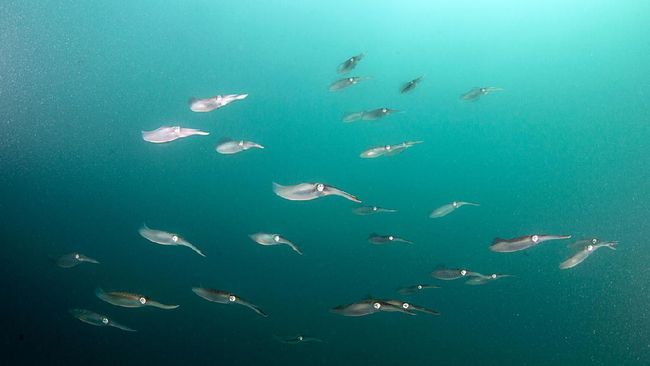Jakarta, CNN Indonesia —
For researcher recently revealed that squid brain development has similarities with man. However, this similarity does not mean that both of them came from the same ancestor.
In a study published December 5, 2022 in the journal Current Biologythe researchers revealed that the brains of cephalopods (cephalopods) or a class of marine animals which include octopus, squid and cuttlefish grow just like humans.
The researchers say that although the evolution of the two is 500 million years apart, the basic blueprint for how complex brains and nervous systems develop at the species level is probably the same.
They uncovered this by using a high-resolution camera that focused on the retina of the embryo of the longfin squid (Doryteuthis pealeii).
The study of cephalopod intelligence itself has long been of interest to biologists. The reason is, unlike most invertebrates, these animals have extraordinary memories.
Cephalopods are known to be able to use tools to solve problems; excels in camouflage; react with curiosity and boredom; and can dream.
The study reveals that a key part of the formula for advanced intelligence remains the same.
“Our conclusion is surprising because much of what we know about the development of the nervous system in vertebrates has long been considered exclusive to that lineage,” said Kristen Koenig, senior author of the study and a molecular biologist at Harvard University. Live Science.
“By observing the fact that the processes are very similar, what we are shown is that both [garis keturunan] it independently developed a very large nervous system using the same mechanisms to build it,” he added
It suggests that the mechanisms that animals use during development may be important for building large nervous systems.”
Furthermore, to study the developing brains of squid embryos, scientists used fluorescent dyes to mark a special type of cell called neural progenitor cells. They did so, before studying how the animals developed with regular 10-minute shots of the microscope camera.
This camera scans the retina, where roughly two-thirds of the squid’s nervous tissue is found.
As a result, as in vertebrates, the researchers saw the cells of the squid ancestor organize themselves into a structure called a pseudostratified epithelium.
This structure is a long, dense structure that is formed as an important step in the growth of large and complex tissues.
Later, the researchers noted that the size, arrangement, and movement of the nuclear structures closely resemble those of the common neural epithelium in vertebrates. This neural epithelium was previously thought to be something unique that allowed vertebrates to have sophisticated brains and eyes.
After this study, the research team wanted to see how and when different types of cells in squid emerge as tissue grows and compare this process to that in vertebrate embryos. If the growth blueprint is the same, then it is likely that the schedule for cell emergence can also be the same.
“One of the big lessons from this study is how valuable it is to study the diversity of life,” said Koenig.
“By studying this diversity, you can really get back to basic ideas even about our own development,” he continued.
(lom/lth)


